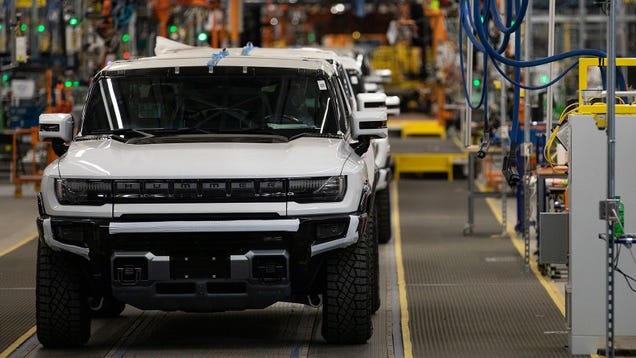The Electric Car Revolution: Unionization Battles Loom for America’s Big Three Automakers
As the world moves towards a more sustainable future, the demand for electric vehicles (EVs) is on the rise. In response, America’s big three car makers – General Motors (GM), Ford, and Chrysler – have announced various expansions to ready themselves for the electric car revolution. However, as they prepare to populate these new and upgraded factories with workers, the United Auto Workers (UAW) are preparing for unionization battles over the plants.
The Rise of Electric Vehicles
Electric vehicles are becoming increasingly popular due to their environmental benefits and lower operating costs. In 2020, EV sales in the US increased by 4% despite the pandemic, and this trend is expected to continue in the coming years. As a result, automakers are investing heavily in EV production to meet the growing demand.
GM, for example, plans to invest $27 billion in EV and autonomous vehicle production by 2025. The company has also announced plans to build a new battery plant in Ohio and convert two existing factories in Michigan to EV production. Similarly, Ford has committed $22 billion to EV production by 2025 and plans to introduce 16 new EV models by then. Chrysler has also announced plans to invest $2 billion in an EV factory in Detroit.
Unionization Battles Loom
As these car makers prepare to ramp up EV production, the UAW is gearing up for unionization battles over the plants. The UAW has a long history of representing autoworkers in the US, and they see EV production as an opportunity to expand their membership.
However, unionizing these new plants may not be easy. The UAW has faced several setbacks in recent years, including a failed attempt to unionize a Nissan factory in Mississippi in 2017. Additionally, some experts believe that the shift towards EV production may make it harder for the UAW to organize workers.
One reason for this is that EV production requires fewer workers than traditional car production. EVs have fewer moving parts and require less maintenance, which means that fewer workers are needed to assemble them. This could make it harder for the UAW to convince workers to join the union, as they may not see the same benefits as they would in a traditional car factory.
Another challenge for the UAW is that some EV production is being outsourced to non-unionized companies. For example, GM has partnered with LG Chem to build batteries for its EVs, and LG Chem’s workers are not unionized. This means that some of the workers involved in EV production may not be eligible to join the UAW.
Despite these challenges, the UAW remains committed to organizing workers in the EV industry. In a recent statement, UAW President Rory Gamble said, “We are committed to ensuring that these new jobs are good-paying union jobs with safe working conditions and a voice on the job.”
Conclusion
The rise of electric vehicles presents both opportunities and challenges for America’s big three car makers and the UAW. While EV production offers a chance for these companies to stay competitive and meet growing demand, it also presents a potential obstacle for the UAW’s efforts to unionize workers. As the industry continues to evolve, it remains to be seen how these competing interests will play out.


